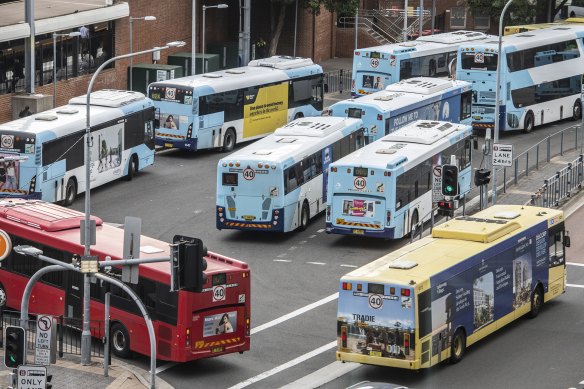
My earliest memories of public transport are with my grandma in Perth: clutching a 50 cent coin which, at the time, was enough to buy a concession ticket.
While my parents and brother drive, my grandma and I never learnt the art of the steering wheel. For us, even now – with me in Sydney and my grandma aged 90 – public transport is an essential part of getting around and staying connected.

Most public transport is funded by state governments.Credit: Steven Siewert
As much as “free” public transport sounds great, I’ve been convinced otherwise (with a few caveats).
First, public transport can’t ever really be free. What we don’t pay in fares, we pay through our taxes. In NSW, roughly one-quarter of the cost of public transport is covered by the fares we pay when we board a bus, train or ferry. The majority, in all states, is funded by state governments.
If we got rid of fares in NSW, every household in the state would have to pay an extra $530 a year to cover the $1.6 billion loss in fare revenue, according to a study by the Independent Pricing and Regulatory Tribunal (IPART) in 2020. That may not sound like too much, especially for someone who frequently uses public transport. But for lower-income earners, it would be a hefty price to pay.
It’s difficult to justify fare-free public transport from an income-distribution perspective. That’s because high-income Australians are the most likely cohort to use public transport, and especially trains, for their daily commute. Yet, if the state government paid for all of it, that funding would come from taxes such as stamp duty, rather than a progressive system such as income tax, meaning some lower-income Australians may end up being taxed more for a service they don’t use.
Loading
A Brussels-based assistant professor in urban studies and planning, Wojciech Keblowsky, who studies this issue in places such as Luxembourg and Estonia, points out the benefit of fare-free public transport for other vulnerable demographics. Ethnic minorities, women and young people tend to be especially reliant on these services.
We do have some discounts across Australia, including free or concession fares for students, seniors and low-income earners. But Keblowsky says other groups may be falling through the gaps. “The state has to recognise people who are worthy of a discounted or free fare, and those people also have to recognise themselves,” he says. Whether it’s customers being in denial of their circumstances, simply not knowing about the discounts, or the state failing to recognise them, some people who would benefit from discounts miss out under the current system.









 Add Category
Add Category